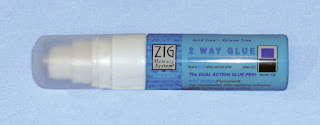Whether they are featured in an arrangement or tied to a single strand of ribbon, few things inspire more joy than a helium-filled latex balloon! To give your customers the most value, here are four essential tips on keeping your balloons—and profits—afloat.
1. Storage
The first step to ensure long float times for latex balloons is proper storage. Qualatex® latex balloons are 100% biodegradable, and so temperature and light have a major effect on the quality of latex balloons. Because of this it’s important to protect them from the elements until they need to be inflated.
| Many balloon stores use storage jars to contain and display latex balloons. |
If using clear jars ensure that they are kept out of direct sunlight.
Avoid exposing your balloons to extreme heat and cold. Storing your uninflated balloons at moderate temperatures will maximise their lifespan. If stored properly, an uninflated latex balloon has a shelf life of approximately one year. Light also contributes to the degradation of latex balloons. Store your uninflated balloons in airtight, opaque containers for optimal protection. Not only does this protect your balloons against light, it allows you to clearly label and organise your product.
Sunlight will also cause your balloons to quickly lose their shine, so be sure to work away from windows when inflating latex balloons. Both heat and light contribute to the process of oxidation, which creates a cloudy appearance on the outside of latex balloons. While this is a natural step in the process of a balloon’s biodegradation, the effects of oxidation can be minimised by covering balloons with a plastic bag, especially if they will be exposed for a long period of time or if decor is done in advance.
Sunlight will also cause your balloons to quickly lose their shine, so be sure to work away from windows when inflating latex balloons. Both heat and light contribute to the process of oxidation, which creates a cloudy appearance on the outside of latex balloons. While this is a natural step in the process of a balloon’s biodegradation, the effects of oxidation can be minimised by covering balloons with a plastic bag, especially if they will be exposed for a long period of time or if decor is done in advance.
Latex balloons can also be protected with Balloon Shine™or Hi-Shine when they are applied to the exterior of an inflated balloon. Both of these products help prevent oxidation and add long-lasting sparkle to your decor. Balloon Shine is applied with a glove and wiped over the surface of the balloon, whereas Hi-Shine is applied using a spray.
2. Inflate and Regulate
By inflating latex balloons correctly, you will maximise float times and provide customers with a more aesthetically pleasing product. When inflating a round latex balloon. It is important to fill it until a teardrop shape is achieved.
•Overinflating balloons adds stress and opens the pores of the latex so helium escapes faster. •Underinflating balloons reduces their float time because there is less helium to lift the balloon’s weight.
•The use of a sizing template, such as the Qualatex ProSizer Templates, is helpful for inflating balloons fully and uniformly.
3. Be Wary of Weather
Proper storage and inflation are only half the battle. A standard 11" Qualatex latex balloo inflated with helium floats between 18 to 24 hours. However, even properly inflated balloons can have different flying times depending on weather and altitude. Heat causes helium to expand, and cold causes it to contract. Expect balloons to expand when moved from an air-conditioned room into a warmer environment. Likewise, helium-filled balloons may appear half-full and not float when moved into much cooler temperatures. When moving balloons from a cool environment to a warmer one, a general rule is to slightly underinflate the balloons. After moving them to warmer conditions, balloons will typically expand back to their ideal size. Air becomes lighter as elevation increases, so the amount of lift you can expect from helium-filled balloons will be reduced. Because of this, larger balloons are recommended when inflating for higher elevations. Conduct your own tests in different circumstances and altitudes to determine typical float times.
4. Maximise Floating Time
So what is HI-FLOAT?
HI-FLOAT® balloon treatment is a solution of a plastic material dissolved in water. It forms a coating inside latex balloons that greatly reduces the helium or air loss.
With ULTRA HI-FLOAT, latex balloons can be prepared a day ahead of time, and balloon bouquets will float for several days.
Helium-filled latex balloons float 25 times longer on average with ULTRA HI-FLOAT, and air-filled latex balloons maintain full size for over one month with ULTRA HI-FLOAT.
HI-FLOAT is very safe. It is non-toxic, non-irritating, noncorrosive, nonflammable and biodegradable. It is similar to the glue on the back of postage stamps.
Average Floating times with and without HI-FLOAT
Float Times Helium Only Helium and Hi-FLOAT
11” / 28 cm latex 1 Day 1- 4 weeks
16” / 41 cm latex 1 ½ Days 3 - 7 weeks
36” / 90 cm latex 3 - 5 Days 6 - 20 weeks
It's easy to see why a professional decorator would use HI-Float in all their helium-filled latex balloons!
Follow these balloon care tips, and you will greatly increase the performance of your Qualatex balloons as well as your customers satisfaction!
Happy Ballooning!
Sue
Follow me @suebowler









































